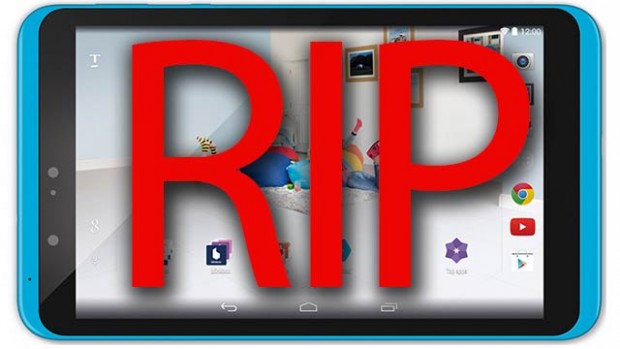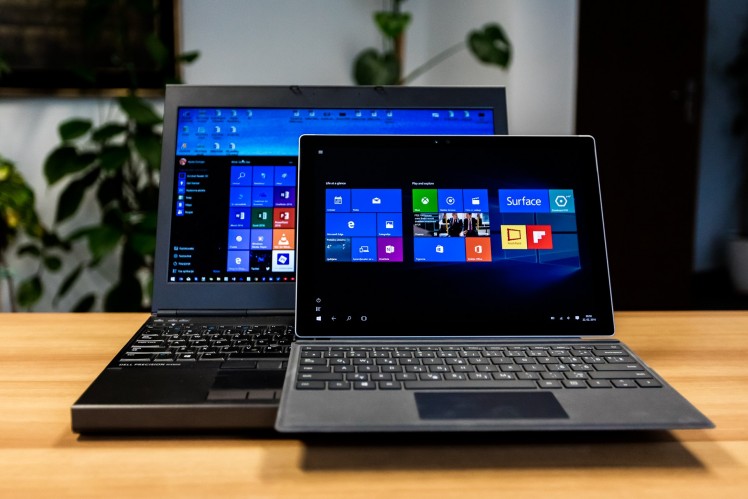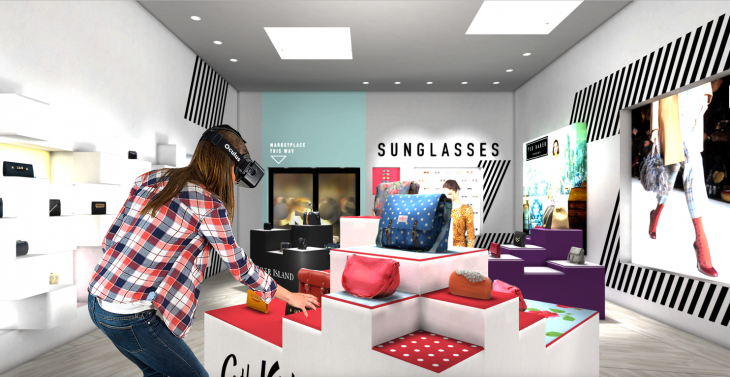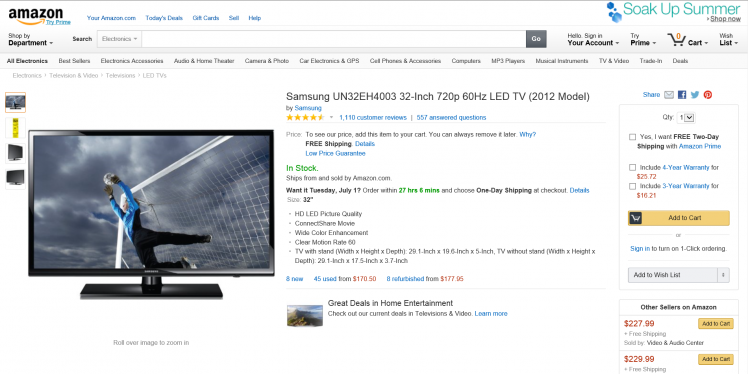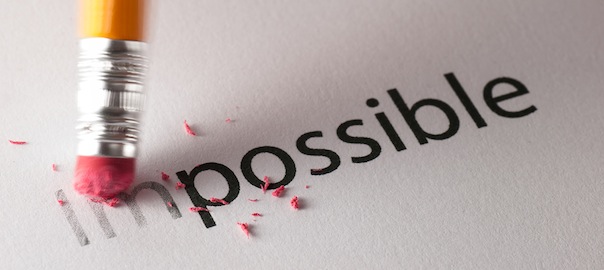Tablets are out
Tablets are out. Apple didn’t come to MWC. Samsung, Sony, HTC and LG didn’t have any new tablet to announce. Tablets are now just a commodity for less than 200 €. No additional value. Profit gone. VR works fine with phones or laptops. I’m sure there will soon find a place on smart televisions, too.
From one side phones are getting bigger (5.3-inch displays) and from another: new generations of MS Surface Pro like devices with Windows 10 which technically are neither tablets or laptops is already on the market. Is it the end of laptops era, too? Two weeks after the launch in Slovenia MS Surface Pro is already on TOP 10 EnaA ranking list.
In June Oculus Rift will certainly change everything again.
Director’s Test Surface Pro 4 for Directors
When Microsoft started selling MS Surface Pro 4 tablets/notebooks with an announcement that this was the right choice for directors and other executives who travel a lot and need a reliable tablet with the capacity of a computer, I immediately asked for this tablet for testing purposes. Until the conclusion of this test and submission of the article to the editor, I was following the news of how Microsoft has been beating the competition with Surface Pro 4 and reading about other tests.
Well, here comes the first real director’s test. As a startup investor, I need a laptop to access networks of a large number of companies with whom I cooperate; access to analytical data on the operations of enaA.com, the largest online retailer in the region; access to a large number of bank accounts and the stock exchange; graphic software to review the marketing materials sent for approval; several Facebook, Twitter and LinkedIn profiles; MS One Drive, MS OneNote, Dropbox, Skype and more. Let me tell you that I use no less than six Internet browsers for my work. In short, I am a very busy user who needs a director’s convenience, a screen for a graphic designer and technology for an engineer. At the same time.
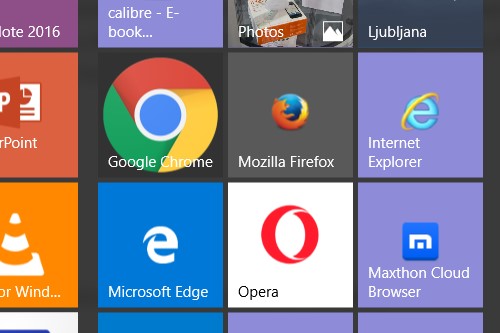 Do you know six Internet browsers?
Do you know six Internet browsers?
Top Design and AI
In several months, this kind of computer will be an obligatory purchase for every manager. I am saying “this kind”, because Microsoft is bound to get copycats. With MS Surface Pro 4, managers have got a device to take them to the next technological period. By all means, the device is a designer eye candy, one that your partners will notice at every meeting. The manufacture is flawless. Every detail has been taken care of.
What is more, it has built-in artificial intelligence: you can give orders to Cortana in English. Find this, find that, open enaA.com website, today’s presentation… Yes, this is not a movie. At the same time, Cortana diligently records your choices and manner of working, so that your cooperation with your digital personal assistant is becoming ever more smooth.
Light
I carry my laptop with me at all times. But my current laptop – though it is a bit more capable than MS Surface Pro 4 – weighs no less than 3.5kg. I hate to leave it in the car, so I sometimes take it with me when I go for a cup of coffee with someone. It looks rather odd, but it is preferable to having it stolen.
Microsoft Surface Pro 4 weighs only 1.1kg, keyboard included. In addition, because it is smaller and thinner, I can put it in my bag and carry it with me without anyone noticing. Truth be told, even I forget that I have been carrying it around.
A Battery That Lasts… and Lasts
I have worked on laptop battery power nearly all the time. When I was writing this article and doing some other things, the battery lasted five hours. When I was surfing the Internet over the weekend, I browsed Facebook and read the news, and the battery lasted an incredible 8 hours. The batteries are re-charged in a good two hours.
Excellent Keyboard
At meetings, I have invariably used Microsoft Surface Pro 4 as a tablet. The one touch works flawlessly. More or less, I have been using the keyboard when travelling or at home. The keyboard attaches itself to the tablet with a strong magnet. And it holds! Surprise fact: the keyboard is big, robust and excellent for typing. The illuminated keys are pleasant to touch and the spaces between them are big. I wrote nearly the entire article with this keyboard.
The Screen
At 12.3 inches, the screen is a bit too small for my taste. Yet, had the screen been bigger, it would be less easy to handle and would not fit into every bag. At the workplace, you can connect it to a docking station with two large external monitors of your choice.
The Docking Station
The docking station is one more proof that this is a professional device. At your workplace, simply connect it to the docking station to which you can connect two large external monitors of your choice and there you go, you have a capable laptop in front of you.
Windows 10
Microsoft Surface Pro 4 would not be as good as it is without Windows 10. Personally, I think Windows 10 looks even more attractive on a 12.3 inch screen, although Windows 10 works equally well on both devices. Well, at least I have used it in the same way.
Final choice
Approximately two years ago, I was deciding between an Apple MacBook and a MS Windows laptop. At that time, I concluded the following:
Apple MacBook is more modern, attractive-looking, lighter and more user-friendly. If what you do for your work needs a single screen – and this suffices most designers, authors, programmers, developers and many managers – then you are bound to be delighted with it. Managing all of the applications on the screen (or up to four screens) with your fingers or a mouse is excellent. It gives a new dimension to creativity. If you use any special software (mostly for design, video processing, photography, etc.) then I have no doubts about Apple being the perfect choice.
Yet for a heavy user – i.e. a heavy miner who constantly switches between at least five websites, uses five additional applications, needs a safe access anywhere to any of the background services of enaA.com, manages several projects which include collaborators from several companies – Apple does not provide sufficient transparency and efficiency. The problems with online banking were the final straw and I decided to keep on using a laptop with the classic MS Windows and Office combination. Working on two laptops with different operating systems does not work well in the long run. I cannot say that I was not sorry when I was erasing my data from Apple’s MacBook, but that how things are.
This time, I have made a comparison with my two months’ old laptop with the following configuration DELL Precision M4800 and MS Surface Pro 4 12.3″ /2736 x 1824 / i5 / 4 GB / 128GB / INTEL HD 520 / WIN 10 PRO.
MS Surface Pro 4 has everything I liked two years ago with the Apple MacBook and a MS Windows computer. Therefore, there is no doubt that today I would buy MS Surface Pro 4: it is a light, yet robust and a top user-friendly product which allows you to work transparently with several applications and switch effortlessly between different environments. In short, it has everything I need. This is a work computer, a laptop and a tablet – 3 in 1. It is something I need as a director, as an IT professional and as a person who works with graphic designers.
Of course, I am going to buy the more capable model MS Surface Pro 4 12.3″/2736 x 1824/ i7 /8 GB/256GB/INTEL HD 520/WIN 10 PRO
How many people have read your articles today?
Online media like to praise the great visit. Do not say, however, that these visits are the result of years of publishing different content which has accumulated a myriad of web sites, among which many a first on Google for a specific search string. Long tail work for the media, which have been online for years.
Ask yourself: how many people visited your entry page today? How many people read the latest posts from your journalists? How many people read the most read? How many second, third. Noooo, tenth, twentieth. Little secret is that access to Google analytics reveals that some articles are not read by almost no one, or indeed anyone.
Journalists are paid for their work. Publishers may charge to users or advertisers only for what they have read, heard or seen and like. This incompatibility is a major problem of the media today. Facebook and other social media makes it just bigger and bigger.
Billions for future fashion brands
Who will be the largest and most influential player in the fashion industry? If you immediately thought of Chanel, Armani, Prada, Dior, Burberry or other high-end brands, or retailers such as H&M or Zara, then it is clear that you are out of the online fashion loop.
Downtrend case
You should find similar story in all countries in which companies pay too little attention to online. The fact is that the internet is an ever-shifting market and trends are bound to turn around eventually; in fact, in the past weeks my discussion partners from the Slovenian fashion industry tried to convince me that lately customers are increasingly seeking out brick and mortar stores. They supported this claim with the fact that the online store Stilago recently shut down after five years of operations, and that from 10 July Fashion Days will also terminate its presence in Slovenia due to some undisclosed business changes. Being the indefatigable online sales promoter that I am, I am concerned by such a turn of events, because this will lead to a temporary standstill of the fashion offering on Slovenian internet sites.
The big players apparently don’t get it. Sportina Bled, which in 2009 generated sales of 77 million euro and once spearheaded the clothing retail industry in the country, generated sales of only 40 million euro in 2014. Instead, the top position went to Magistrat International (Galerija Emporium owner) which has seen a gradual decline of sales from 2011, too. (the 2014 figures have not yet been published). However, since the people of Slovenia still wear clothes while going about their daily business, it is clear that a shopping shift must have taken place: they now shop at online retailers from abroad. I do not think it is good idea to sit around, waiting for the tide to turn and for the customers to return to conventional stores.
Global growth
There are three notable European companies competing on the global fashion market: First there is the Germany-based Rocket Internet Group, the second is the British Asos and the third the Italy-based Yoox which has just recently acquired the fourth competitor Net-A-Porter. It looks like in 2016 they will be joined by Style.com, which is currently a website featuring fashion photography and fashion articles, and owned by the Conde Nast company which publishes the famous Vogue – not exactly a fashion rookie, right?
These online retailers reported that their sales figures have skyrocketed and apparently none of them have problems coming up with the capital necessary for the fast growth which is required to win this race.
On its website, Rocket Internet boldly declares that it sets out to become the largest global online platform outside the USA and China. The proof that this statement is more than just wishful thinking is their spin-off company Zalando – the largest fashion item retailer in Europe. In 2014 Zalando recorded a jump from 1.7 billion euro to 2.2 billion euro, for the first time wrapping up the business year with a healthy profit of 47 million euro. The company began its sales operations in 2008 in Germany, and currently runs subsidiaries in 13 European countries, its total worth valued at 7.7 billion euro. Rocket Internet is the lead shareholder in the Global Fashion Group which recently announced that it secured 150 million euro in new funding to purchase the Brazilian online retailers Kanui and Tricae.
Yoox too is aware that there is a market to be conquered beyond Europe. After acquiring Net-a-Porter, the company expects large growth in China which is said to become one of their top ten markets already this year. In 2014, 24 million visitors per month generated sales in the amount of 1.3 billion euro. Combining fashion and technology, the retail giant is valued at 1.8 billion euro which is not much considering that Yoox and Net-a-Porter were among the first online fashion stores around.
But I guess there is more to it than just business results. In 2014, Asos generated a little less than 1 billion euro in sales, driving its value to around 7 billion at the beginning of this year. Later it dropped to 3 billion and currently stands at 4 billion euro. Last year the growing strength of the British pound made Asos less competitive on the Russian and Australian market. This led to a drop in sales and lower prices in turn affected the sales performance. Even though online retailer Asos boasts of cultivating shoppers with high customer loyalty, the company quickly realized that the modern shopper is not prepared to choose loyalty over price.
Making room for new players
There is a large gap in online fashion which should be filled by start-up companies from all regions.
Styliff, a young company (for the time being still mostly Slovenian owned), designed an app for trying on garments found online before committing to a real purchase. More specifically: you can dress one of the photos that you previously saved on your smartphone in the desired garment. Naturally, you can share your experience with your friends, ask for their opinion and commit to a purchase only when you are absolutely sure that this is the outfit for you. But watch out – according to the first results shoppers buy and spend more when using this app! This new way of shopping for clothes therefore appeals to online retailers and has made the Styliff team feel more than welcome in retailers’ offices. Their brand offer now includes clothes by MaxMara, Diesel, Boss, Ralph Lauren, Moschino, DKNY, Alexander Wang and others. They are among the most successful and most observed companies in ABC Accelerator Smart Cities program with estimated value 3 to 4 million euros.
Another innovative way of shopping was showcased by Trillenium . A combination of virtual reality, computer games, mobile technology and 3D technology resulted in a virtual store where you don’t browse but instead walk around the online store, choosing items that catch your fancy. Immediately recognising the company’s potential, Asos pledged funds and commissioned the first virtual stores. This is a big step forward for the e-tailer without a single brick and mortar store. And perhaps this concept will be their competitive edge. Enough for Trillenium estimated value 3 million euros.
Now, who are you going to wear tomorrow?
When Food Waste Turns into a Global Business
When, a few months ago, I heard SmartFuturistic speak for the very first time, story immediately appealed to me. Too much food is being thrown away, and if this can be reduced, however slightly, using a mobile phone application (these are, after all, the only applications that are made nowadays), it is worth listening to the idea and, if need be, help out. Can it be turned into a business? Perhaps.
Instead of complaining about the fact that some sellers and producers waste up to 30% of food left on their shelves, SmartFuturistic thought about what they knew and what they could do to solve the problem. The solution is the smartFuturistic application that helps producers and retailers sell their stock. The closer the “best before” date, the harder it is to sell. And all that is left when the date expires is the cost of discarding the food.
This is where SmartFuturistic comes in: the new application allows producers to extend the time of sale, thereby reducing the possibility of having to throw the food away. The algorithm helps sellers find the appropriate buyers and, in the event of reaching a deal, the most appropriate means of transport. Though the application was initially meant to be a shortcut to selling to larger clients, such as schools, kindergartens, hospitals, hotels, zoos and similar enterprises and organisations, it quickly became apparent that the solution also establishes connections between sellers and buyers over greater distances. Using SmartFuturistic, a German company can, for instance, sell its excess beer to China.
At this point, everything goes into overdrive. The SmartFuturistic team becomes one of the first eight companies to receive funding from the business ABC Accelerator, develops at a blistering pace over a period of three months and draws the attention of a large number of international investors on the presentation day. Not even a fortnight later, they come in second at the TechCrunch start-up competition (more on http://techcrunch.com/2015/07/13/budapestcrunch-ii-was-a-great-success) in Budapest.
Thanks to their extensive know-how and excellent solution, the future is wide open for the enthusiastic, well-organised team of SmartFuturistic. Anyone thinking of making it in the business world would do well to remember that SmartFuturistic’s solution is coming on the market at the right time. (Timing is important!) Well, maybe a second too early, just enough to get ahead of the competition. Which never hurt anyone. But the fact is that the world wants and needs this solution. It does not need convincing. The United Nations have adopted a plan to cut food waste by half by 2030, thereby reducing the number of starving people around the world. A few weeks ago, France passed a law prohibiting supermarkets from throwing away food that is past its “best-before” date. But that is only part of the problem. A large portion of food rots in the fields. I am glad that this issue has become a topic of discussion among European politicians, with similar laws being drafted in other EU Members states as well. I am even more glad, however, that SmartFuturistic and their investors have recognised this as a business opportunity. That is the best guarantee for reducing food waste.
What matters most in selling online?
At Amazon.com you can buy just about anything. Still, it is public secret t that 80% of their sales are generated from products that are sold exclusively at Amazon. Never mind the fact that the company is the leading online retailer boasting the largest customer base, a quick website featuring detailed descriptions and contents, an excellent user interface and so on. Just look at the prices of any of the technical products and you will get the picture. It’s the price. The main obstacle is the high price.
Being the only provider of a certain item and offering your products only at a website such as Amazon.com, you can achieve great sales results. Having come to the same conclusion, many Americans and other vendors rely on just one website such as Alibaba.com, eBay.com or Amazon.com or, alternatively, just a handful of online stores to sell their products.
Do you want to know why this is a good thing?
Manufacturers who dominate classic sales channels have an interest that their products take up as much of the sales’ area in as many stores as possible. Some opt for a smaller number of intermediaries who meet certain criteria to assist them in this process, but regardless whether they decide to set up an intensive or selective sales’ path, they are always on the lookout for more intermediaries. In certain fields exclusivity is rare. Buyers are looking for providers offering the best deals, but retailers can maintain different prices on account of their personal approach and special bonuses without being in direct competition with each other, even though they are only a block or two apart.
The internet on the other hand is a very different animal. The internet is about transparency; it is also about a unique mix of indirect and direct sales. It’s a whole new model. The manufacturer or provider can offer their product or service directly to the shopper, albeit indirectly via an online service such as Amazon.com or enaA.com, but this does not diminish the fact that this is a direct selling technique. More often than not, products are delivered from the manufacturer’s warehouse. That makes sense – it’s practical, quick and cheap. The warranty and after-sales customer support have to be provided by the manufacturer and its servicing network. Ultimately, the product price is also determined by the manufacturer itself. In short, the online retailer is an intermediary, whose role is much smaller than in classic sales, giving the impression that the shopper and the manufacturer communicate without any intermediary at all.
Why I advise against copying classic sales’ paths and applying them online?
Manufacturers who go down this path and offer their products in countless online stores are faced with the issue of price management. Online stores are not several miles apart, but only a few clicks. Shoppers can thus easily find stores that offer the same product for a lower price. And distance doesn’t matter; the store can even be abroad.
Now let us take a look how this works in practice. The Samsung UN32EH4003 television set is listed at Amazon.com without a price. Instead, it says “To see our price, add this item to your cart.” The shopper can only see the price after adding the product to the cart where it says that their price is lower than Samsung’s recommended retail price, so Samsung does not want it to be public.
If you think that the two retail giants Amazon and Samsung have adopted a successful sales model and that this approach is a good idea, I suggest googling “UN32EH4003”. You will get hits for this TV at samsung.com, amazon.com, digitaltrends.com, walmart.com, bestbuy.com, cnet.com, ebay.com, electronicexpress.com and conns.com. Each site displays a different price. Samsung doesn’t control anything; it just limits sales via online retailers who are big enough to be controlled.
Which one of these platforms will end up selling the TV? The one with the fastest and more flexible service, and with the lowest price point. This is why you will not find this TV among the bestsellers at Amazon.com.
Similarly, Google doesn’t favour the offerings of the same product at various websites with an identical photo and descriptions. For the browser, this is just a copy of one and the same site, and is therefore punished by a lower rating. If someone looks up LCD TVs, those pages will not be among the top hits, I am sure of it. Now you have another reason why it is better to be the direct retailer online.
However, even though Samsung and other similar retailers did not adapt to the new situation, smaller American business saw their chance in selling their products and services exclusively via Amazon – with great results.
Example from Slovenia, Europe: enaA.com offers you the Samsung 32H4000 with the lowest price guarantee.
Banks are losing the payment transaction business
In a few years, payment transactions and trade will be completely different from what we are used to.
If you are not buying things online and are not aware of the unbelievable growth of online sales, or if paying with PayPal still seems like a novelty to you, then you are behind the times. You probably do not know that there are new online retail companies providing services which attract more and more payment transactions. Will you continue to read if I promise to list three new European service providers whose individual worth exceeds EUR 1 billion?
The breathtaking growth of areas including online sales, cloud technology and the standardisation of devices (which allows virtually the same software to run applications on smart phones, tablets, computers, POS terminals and other devices) has enabled new service providers to enter the market as soon as they spot an opportunity. This time we are not talking about the sort of enthusiast that the market has a hard time understanding and accepting. We are talking about unicorns. I am not being romantic – this is the actual name given to start-ups who quickly achieve a worth of EUR 1 billion or more. Their businesses are shamelessly large, but even so, in Europe we have at least three unicorns in this sector alone.
Doubling the Volume of Business Each Year
Adyen (www.adyen.com) provides a seamless solution for mobile, online and in-store transactions, which enables merchants to accept almost any type of payment anywhere in the world. The solution is used in the largest stores and kiosks as well. Having received a financial injection worth USD 250 million from General Atlantic, Index Ventures and Felicis Ventures in December 2014, the company’s worth has been assessed around EUR 1.4 billion.
Its Dutch founders, Pieter van der Does and Arnout Schuijff, like to emphasise that as of yet they are not considering selling their company. And why would they? They double the volume of their business each year. At the moment, the company operates in 187 countries and their services are used by 3,500 global service providers, including Facebook, Burberry and Spotify. They can wait a few more years and then retire with EUR 30–50 billion in their pockets.
A Business Larger than Alibaba
Powa (www.powa.com) is a British unicorn. In June 2014, the company bought their smaller competitor, the Hong Kong-based MPayMe, for USD 75 million and expanded their services in the field of mobile payments. Although the purchase price amounted to the company’s sales over 2.5 years, it has proven to be a worthwhile investment. Today, Powa is worth around EUR 2.5 billion. Dan Wagner likes to boast that his business is larger than Alibaba.
Powa combines mobile payment services with online commerce services. PowaWeb provides cloud-based commerce services. PowaPOS is an application that transforms a tablet or smart phone into a cash register. PowaTag provides a new payment solution which is used by more than 1,100 service providers worldwide. All of these services operate online, offline and in physical shops – from the smallest boutiques to the largest shopping centres.
Banks Cannot Compete
Owners of Skrill (www.skrill.com) were less patient and sold the company to the London-based Optimal Payments for “a mere” EUR 1.1 billion. Skrill is in charge of payment transactions on eBay, Bet365 and Skype. In contrast to its competitors, Powa and Adyen, the company also provides money transfer for their users and operates in other fields where there are plenty of other unicorns.
If I reveal that Powa employs only 500 people, it becomes clear that banks simply cannot compete with the new services provided by these companies – companies which bring a new approach, quality and, above all, lower costs. In a few years, payment transactions and trade will be completely different from what we are used to.
Googlewise
Just as I was about to plant some raspberries, I turned to Google to find out when and how to do it. I love Google being able to understand questions such as When to plant raspberries? or When was George Washington born? or What is the capital of Moldova? Believe it or not, the programme for analyzing customer journeys to enaA.com also reveals very long questions. Several months ago, a customer entered the following query into Google: “Which LED TV set for less than €400 is best for kids and a living room of 5 x 4 metres?” Of course, Google knows that such TV sets are also featured on www.enaA.com, so the customer was referred to us.
But, is Google truly the tool or invention that will take the entire human race to the next level? This reminded me (without having to resort to Google to look it up) of an ancient story that was written around 400 BC. And yes, I would have to google the exact date.
Today, we tend to forget that in the beginning letters and words were not written down. Plato, through a dialogue between Socrates and Phaedrus, tells the legend of Thamus (alias Amun, Amun-Ra etc.), the ancient Egyptian king of gods, taking place at a time when people started to use writing.
At one time Thamus was host to the god Toth who was one of the most important Egyptian gods and the initiator of science and art, the inventor of numbers, mathematics, astronomy, astrology, geometry, botany, theology, medicine and writing. Toth boasted that writing would make the Egyptians wiser and give them better memories. Thamus replied: “The inventor is not always the best judge of his own inventions. Those using your invention will no longer train their memory and will become forgetful. They will put their trust in written sources when they want to retrieve information, and not to their memory. Your people will possess wisdom kept in records, and not their own wisdom. In time, there will be more and more records without any criteria or instructions. Rather than an advantage, such wisdom will become a burden. Instead of growing wiser, they will grow increasingly ignorant, instead of their memory becoming alive, they will neglect it and become forgetful.”
Let’s imagine Larry Page and Sergey Brin paying a visit to Thamus today. They would say how they had found a way to organize all the information in the world and make it available and useful to the whole world. They would conclude that from now on everyone can know everything.
Yet Thamus would reply: “Those who use your invention will no longer accumulate knowledge and will therefore know less and less. When they are curious about something, they will google it. They will boast about the knowledge that is stored on the world-wide web, and not what they themselves know to be true. In time, more and more knowledge will be at their fingertips without any criteria or instructions. Rather than an advantage, such knowledge will be a burden.”
Writing enabled mankind to evolve. So did the internet and Google, but don’t take everything that is written too literally! Let me just remind you of the copy-paste doctoral and masters theses, and the ease some people talk about things they know nothing about, apart from knowing that they are trending, not to mention politics. This is knowledge without criteria and instructions. This is boasting using someone else’s knowledge. Technology alone is therefore not enough to take us to the next level.
The Myth of the Borderless European Digital Market
So I buy a subscription to my favourite TV channel, drive to the seaside… and realise my subscription doesn’t work there. The seaside is in another EU country, my computer connects to a different Internet service provider there and the copyrights I have bought are only valid in Slovenia.
If I go for a vacation to Croatia (which, by the way, has the nicest seaside in the EU http://croatia.hr/en-GB/Homepage), this does not mean that I am interested in their local commercials for cars and offers for smart phones with subscriptions. If I was interested in any commercials on my vacation, it would be commercials from the country where I spend most of my time and spend most of my money. I am certain that advertising agencies understand this. Unfortunately, it seems that those who write regulations and draw up copyright contracts do not. From the user’s point of view, the whole thing is rather stupid, but in reality, there is much more to it. What it means is a breach of my basic right to use what I have bought anywhere and anytime I want.
Europe (whatever this means these days) promises the following on this page http://europa.eu/pol/singl/index_sl.htm (and not only on this page), and I quote: “In the EU’s single market (sometimes also called the ‘internal market’) people, goods, services, and money can move around the EU as freely as they do within a single country – instead of being obstructed by national borders and barriers as they were in the past. EU citizens can now study, live, shop, work and retire in any EU country. Or we can stay at home and enjoy a vast array of products from all over Europe.”
Sending Goods to Africa Is Cheaper than Sending Goods to Slovenia
Well, of course. You can sit down at a computer anywhere in the EU, browse online shops and buy a thing or two. Oh, but wait, here comes the catch: you soon realise that if you buy a book from Amazon.com, the cost of delivering the same book to the Italian side of the town, called Gorizia, is at least 20 percent lower than delivering the book to the Slovenian side of the same town, called Nova Gorica. If you look at http://www.amazon.co.uk/gp/help/customer/display.html?nodeId=11072981, you will also see that Amazon UK charges lower delivery costs for delivering the same book to South Africa than to Slovenia.
Even worse is the feeling when a Finnish server rejects you and states: “No, we do not sell to your country, this product is available only for us, the Germans, the Italians, the French and the English.” Even the largest and most modern online store of all, amazon.com, refuses to sell a number of things to Slovenia. But they only tell you this at the very end of the purchasing process:

You are, of course, welcome to order the product as poste restante to the neighbouring Italy or Austria. The reason for all of this is, for the most part, not knowing consumer rights in individual countries and the connected risks.
When, finally, you realise that the delivery cost from an online store in Klagenfurt (Austria) to Ljubljana (Slovenia) is several times higher than the delivery cost from Lendava (Slovenia), which is quite a few more kilometres further to the east, you really have to ask yourself where is this mythological single internal market whose benefits I am supposed to fully enjoy as a citizen of an EU country. How come that not all consumers from EU countries enjoy the same consumer rights? The borders have been down for a number of years. Why am I being discriminated as a consumer from Slovenia?
The European politicians claim that the development of a single digital market is one of the most important generators of European economic growth. Within this framework, in 2013 they implemented the regulation on website cookies which has not increased the volume of European online sales, nor has it improved consumer experience. Cross-border online sales account for only 14 percent of online sales, while the European consumers happily shop in non-European online shops.
The New “Cookies”
In Brussels, they have been setting up an extensive legislative reform which is supposed to make the matters even more complicated in the next two years, defining (among other things) what is and what is not allowed in terms of e-marketing. By doing so, the EU aims to place an additional burden on the EU retailers, whilst enabling unfair competition of virtually all global providers on the EU market.
Just like in the case of cookies, one cannot get rid of the feeling that they do not have a clue about what they are doing. For example, Microsoft has revealed that every minute they block more than 10 million spam messages aimed at the e-mail addresses of their company. You cannot solve this with legislation.
A Single Digital Market
As of yet, when it comes to online and mobile sales and marketing, we can only follow the technological solutions of American companies. Making just a few clicks reveals that the story about the borderless single European (digital) market is a myth. The Americans have a single market with 300 million users, whilst in the EU we have 28 markets with around 500 million users.
To ensure a single European digital market, Jean-Claude Juncker and his team ought to ensure a single postal system, a single copyright system, equal rights as regards product warranties, consumer protection and other consumer rights, so that all consumers within the EU could really, finally, sell and buy under the same conditions. A market of 500 million people is the basis for starting to develop our own solutions and our own user experience, which should be supported with appropriate legislation. As things are at the moment, Europeans seem to be their own worst enemy.
Slovenska verzija http://aljosadomijan.com/bajka-o-velikem-digitalnem-evropskem-trgu/
Telekomi kot komunalna podjetja
Prihodnost telekomov je prej v kategoriji komunalnih podjetij kot pa tistih, ki vodijo svetovni razvoj.
Dejstva, da v Evropi nimamo proizvodnje računalnikov, verjetno ni treba posebej poudarjati. Čeprav smo celo v Sloveniji imeli eno redkih tovarn mikro elektronskih vezij že leta 1977, v tistem času zelo iskane in strateške tehnologije, ki je igrala glavno vlogo v kar nekaj filmih o Jamesu Bondu.
Tega nam nikoli ni uspelo pretvoriti ne v velik posel ne v vsaj minimalno pozitiven poslovni rezultat. Iskra Mikroelektronika je bila kar 12 let podjetje v ustanavljanju, tako rekoč ves čas pa se je spopadala z izgubami, »prepočasnim prestrukturiranjem« in slabimi razvojnimi koncepti. (Javna tribuna Ljubljana Šiška, številka 296, letnik 29, 10. maja 1989). Podjetje so leta 1989 zaprli, napovedanega »tehnološkega parka za mikroelektroniko« pa nismo dobili nikoli.
Evropa je pokazala nekaj več, a tovarne, kot so bile Nixdorf, pozneje Siemens-Nixdorf, Olivetti ali pa Asem, so vse po vrsti hitro izgubile sapo in končale v rdečih številkah. Skratka: nič.
Bila je vsaj Nokia
Slab okus je popravila Nokia z mobilnimi telefoni. Evropa je, medtem ko so v ZDA gradili optična omrežja in internet, pravilno stavila na brezžičnost. Še vedno se spominjam začudenega obraza ameriškega carinika v New Orleansu, ko si je ogledoval moj mali Nokijin mobilni telefon, ki takrat v ZDA sploh še ni delal, saj tam niso imeli omrežja. A tudi to je zgodovina. Nokia je danes podjetje, ki mu ne more do vsaj delčka stare slave pomagati niti novi lastnik Microsoft.
Da, imeli smo tudi Skype. Omrežje in programsko opremo so razvili trije Estonci: Ahti Heinla, Priit Kasesalu in Jaan Tallinn leta 2003. Dve leti pozneje so ga prodali eBayu za 2,6 milijarde dolarjev. Od oktobra 2011 pa je za 8,5 milijarde v lasti Microsofta.
Idealni za računovodske module
Še vedno pa je večinoma evropski SAP SE (Systems, Applications & Products in Data Processing), podjetje s sedežem v Nemčiji in podružnicami v 130 državah ter po svetu razpršenimi delničarji.
Kar se mene tiče, to ni naključje. Evropska unija je s svojo nagnjenostjo k hiper regulaciji z zakoni, ki potem zahtevajo tudi ustrezen nadzor, naravnost idealna za podjetje, ki mora ves čas skladno s spremembami zakonodaje spreminjati računovodske module in dodajati nove. To znamo! Če se kje na svetu zbirajo najboljši tovrstni strokovnjaki, je to gotovo v Evropi. In tudi pri nas so programi za vodenje podjetij dober posel.
Travma evropskih telekomov
Brez strojne in programske opreme nam ostane le še telekomunikacijski sektor. V njem se obrača največji del IKT-denarja, a mu manjka širine, idej, prožnosti in inovativnosti. Da, lahko bi se spomnili in prvi ponudili storitve, kot je Uber ali Airbnb, lahko bi ponudili oblake, a dejstvo je, da so posli prihodnosti majhni in prožni, čisto druga zgodba kot telekomi, ki bi bili radi še večji in večji. In prav velikost je travma evropskih telekomov.
V Evropi je več kot 120 TK podjetij, v ZDA na primer le šest – toliko o tem, če še kdo dvomi, zakaj je treba prodati Telekom Slovenije. Cenovna vojna med njimi onemogoča gradnjo uspešnih poslovnih modelov. In medtem ko njihovi prihodki in dobički upadajo, podjetja, kot so Apple, Google, Skype, Facebook, WhatsUp, Twitter in podobni, služijo vse več. Apple na infrastrukturi telekomov zasluži toliko, da je danes sam vreden več kot sto svetovnih telekomov skupaj. Prihodnost telekomov je tako prej v kategoriji komunalnih podjetij kot pa tistih, ki bodo postavljala temelje svetovnega razvoja.
Podatki ne gredo po železnici
In tako smo bolj ali manj spregledali, da smo v zadnjih desetih letih tudi pri nas ostali tako rekoč brez večine uspešnih slovenskih IT-podjetij, brez dovolj širokega kroga strokovnjakov, ki bi danes znali opozoriti, da IKT-področje zanemarjamo, ter brez ljudi v krogih odločanja, ki bi temu znali prisluhniti.
Zato se zdi, da je vse lepo in prav. A ni! Medtem ko Angela Merkel že vodi Nemčijo v obdobje Industrije 4.0 (povezava digitalnih tehnologij, proizvodnje in logistike) in razume, da Evropa nima prihodnosti brez vidnejše vloge v digitalnem svetu, se mi ne sprašujemo niti tega, kdo bo financiral nadaljnji razvoj infrastrukture za hitrejši prenos podatkov. Ne, tega ni mogoče prevažati po železnici.
Prvič objavljeno 11. marca 2015 v časopisu Finance http://www.finance.si/8818705/Aljo%C5%A1a-Domijan-Telekomi-kot-komunalna-podjetja

